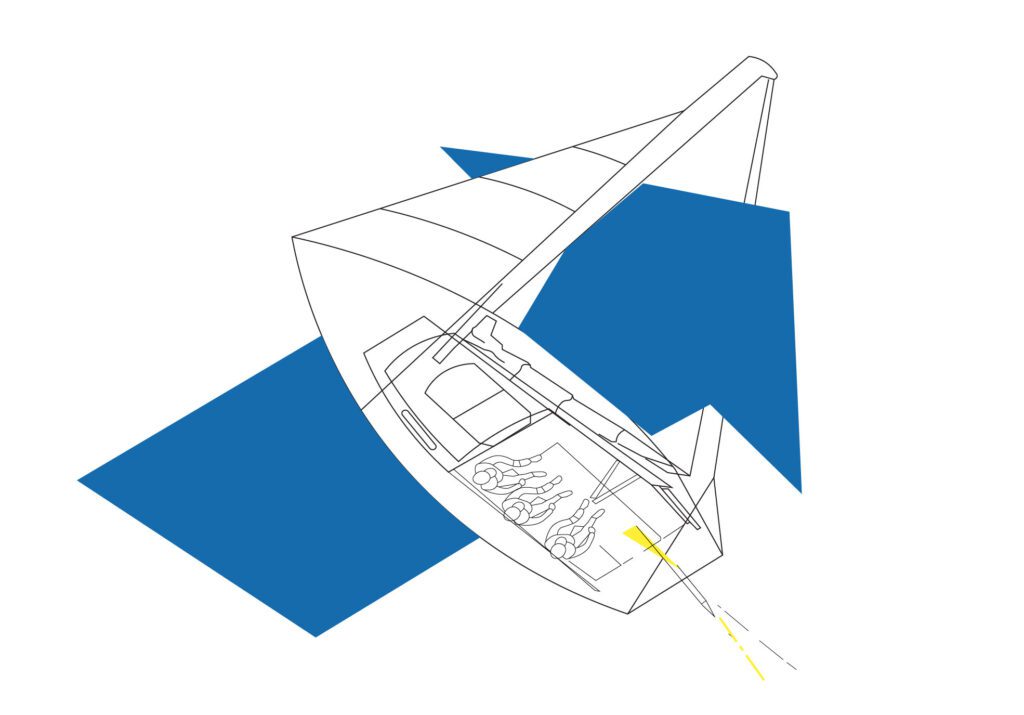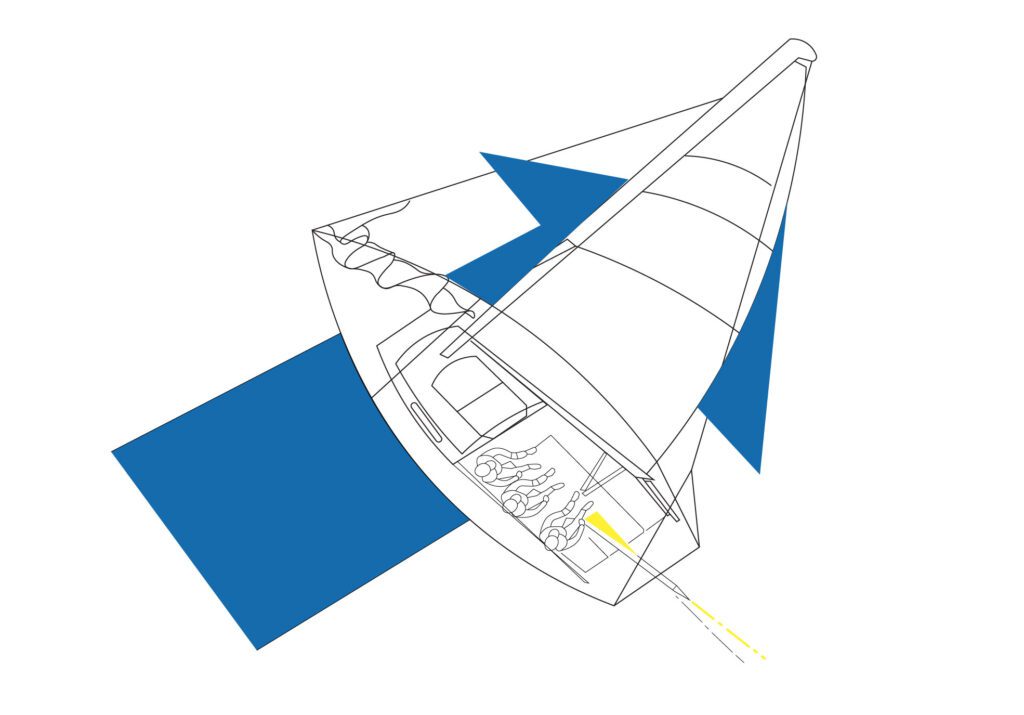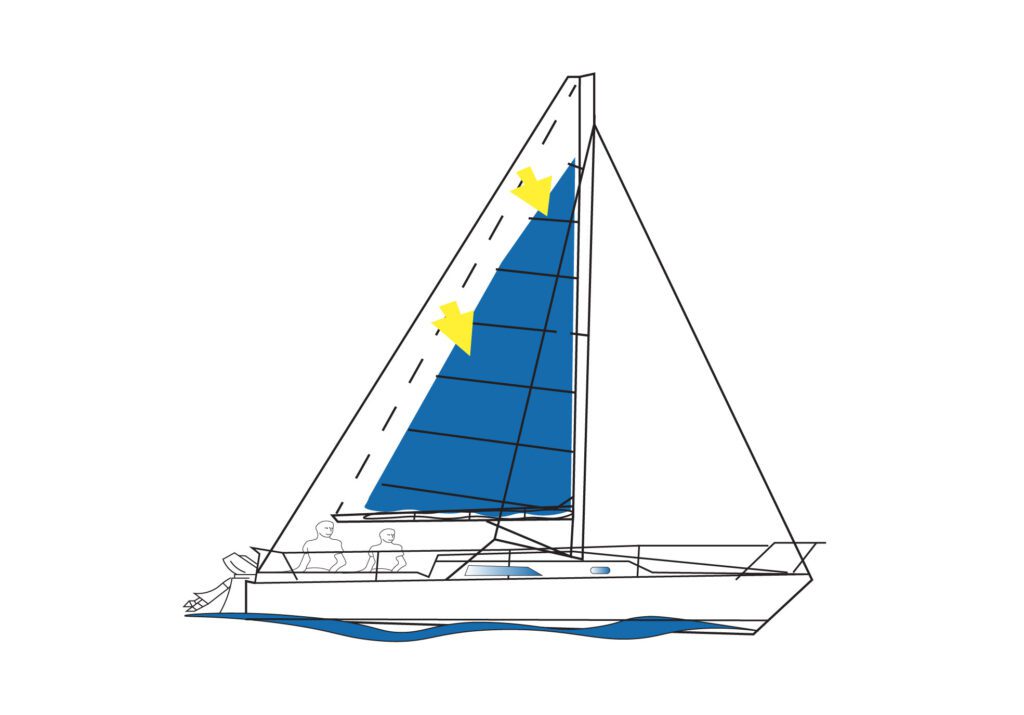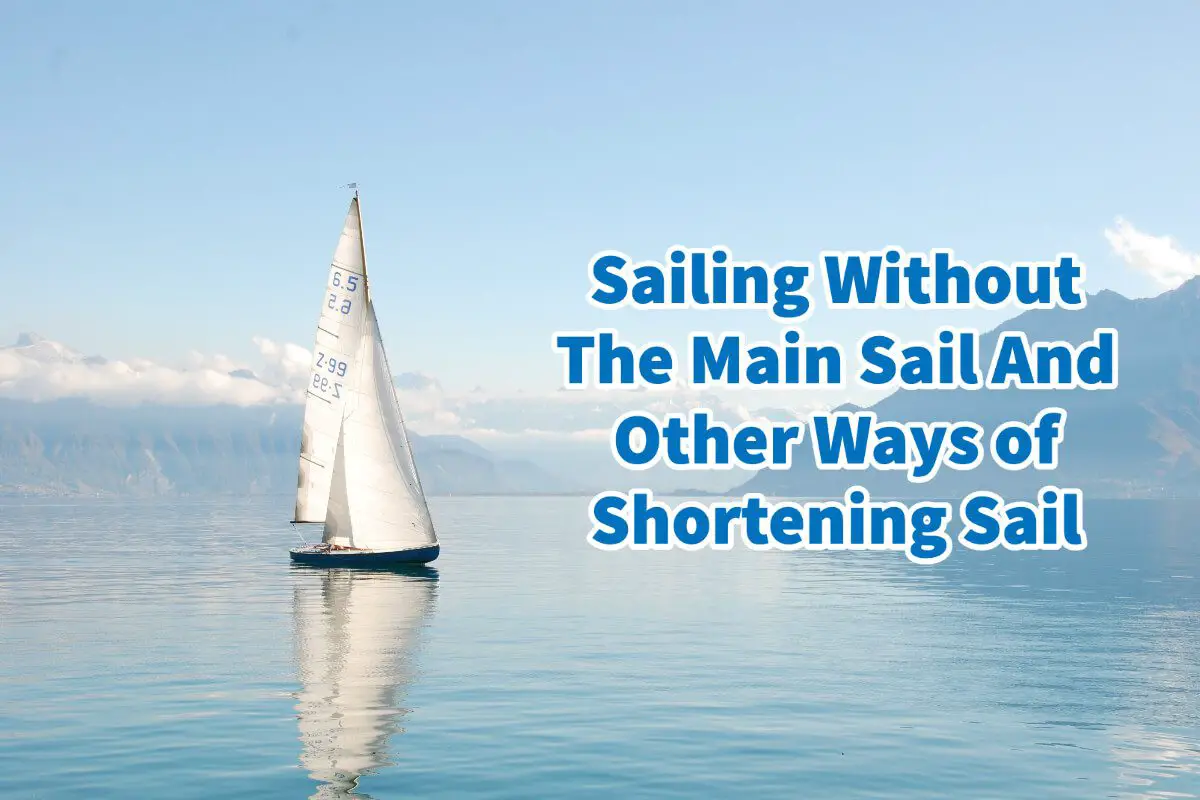If you are out sailing and need to shorten your sail due to high winds, there are certain things you can do. You may need to shorten your sail if your boat is heeling too much.
If you need to shorten your sail, one way to do this on a keelboat is to lower the mainsail. Another way is to lower the jib sail. Finally, you can do what is known as reefing: reduce part of the main sail or the jib sail. All of these are what is known as shortening the sail.
Table of Contents
- Sailing Without The Mainsail
- 12 Reasons to Enroll in a Sailing Course
- Frequently Asked Questions
- Related Questions
Sailing Without The Mainsail

A sailboat is made to be sailed with both the jib sail and mainsail, but there may be some circumstances when you need to sail without the mainsail and only the jib. To sail with only the jib, it is essential that you understand the boat you are sailing and you know that the boat has a backstay.
You must know enough about the type of boat you are sailing so that you do not do anything to damage the boat or the jib sail.
If you find yourself in a situation where the wind is so strong, and your boat is heeling too much, you can shorten your sail. One way you can do this is to lower the mainsail and sail only with the jib sail.
Not all boats are the same, but the instructions I am giving below are for a basic keelboat. If you have another kind of boat, you will need to learn what your boat is capable of and able to handle or not handle.
If the wind is very strong, you can consider lowering the main sail on your keelboat as follows:
- Lower the main sail.
- Your boat will no longer be balanced, as the most balanced way to sail a boat is with the jib and mainsail both up.
- The wind pressure on the jib will tend to rotate the boat’s bow away from the wind. To compensate for this pressure and lack of balance with just the jib sail up, you will need to use the tiller to help you balance the boat.
- Push the tiller slightly towards the mainsail to keep the boat sailing straight.
If you are out in high winds, it may be hard to lower your main sail. I know the Ensign boats that we sail. It is much easier and safer to lower the jib than the mainsail. Especially out in high winds, if someone needs to get on the boat’s deck to lower the mainsail, it could be dangerous and not the best choice.
Lowering The Jib Sail

If you find you are in high winds and need to shorten your sail as the wind is too strong, one of the easier and usually safest things you do is lower your jib. The Ensign boats I sail make it very easy to lower the jib sail even in high winds.
When you lower the jib sail, you need to remember the following:
- Lower the jib
- When you lower the jib, the boat is no longer in balance. The wind pressure on the mainsail will tend to make the boat want to rotate the bow towards the wind. It would help if you steered with the tiller to compensate for the ship wanting to turn towards the wind. Push the tiller slightly away from the mainsail to keep the boat sailing straight.
- Not all kinds of boats can sail windward with the jib down.
I have sailed with the jib lowered quite a bit. When we enter or exit the harbor area, we always bring the jib down and dock the boat with only the mainsail. Sailing with only the jib is one of the safest positions and ways to sail the boat through the harbor area.
Reefing The Sail

Another thing that you can do is known as reefing the sail. Reefing the sail is a way to shorten the sail and is used a lot by experienced sailors in strong or heavy wind.
To reef, the sail means bringing the sail down a bit, so your sail is not as full when entirely up. It also means that your boat will go just as fast, but you will have more control in a high-wind situation.
When in a higher wind situation, we may reef the jib sail in a higher wind situation. This gives us a bit more control without losing too much speed. In other circumstances, they may reef the main sail.
The main point of reefing the sail is that you are reducing the size of the sail by doing what is known as shortening the sail.
Here are some things to remember when reefing the sail:
- You reduce the mainsail or jib; usually, you lower it about a foot or so. You want to have enough sail so that you can continue to sail but at the same time be able to gain better control in a high wind situation.
- When you lower or reef the sail, you must ensure the sail is secured in the lowered position. Lowering the mainsail is best when on the close reach or Hove-To position or when the main sail is luffing. We also call this the safety position.
For most sailors, reefing the jib or mainsail is the right call to make in high winds. When we are in some high winds, we find that reefing the jib is often the best call for us as we still have the mainsail to sail, but at the same time, we gain control in the higher winds.
When sailing, knowing and understanding all these options is essential to ensure that you can safely sail your boat.
12 Reasons to Enroll in a Sailing Course
As someone who has taken several sailing courses, I can attest to their immense value to novice and seasoned sailors. From understanding the intricate components of a boat to mastering the art of navigation, these courses have been instrumental in my sailing journey.
Here are 12 reasons, based on my personal experience, that highlight the importance of taking a sailing course:
- Learn the Anatomy of a Boat: It’s crucial to familiarize yourself with the boat’s parts. Courses provide comprehensive knowledge about every component, from the bow to the stern and everything in between.
- Master Sailing Terminology: Knowing proper sailing terms ensures effective communication on board. Whether it’s “port,” “starboard,” “tacking,” or “jibing,” a course will make you fluent in sailing jargon.
- Roles and Responsibilities: Understand the distinct roles of skipper and crew. Knowing the duties, whether you’re in charge or assisting, is essential for smooth sailing.
- Navigational Rules: Just like on roads, there are rules on water. A sailing course teaches you the “road rules” of waterways, ensuring safe and conflict-free navigation.
- Safety Drills: Learning about emergency situations like “man overboard” and practicing these drills instills confidence and ensures the safety of everyone on board.
- Understanding Different Sails: Sailing courses provide insights into the various types of sails, their purposes, and when and how to use them. For me, this was a pivotal aspect of mastering the sailing craft.
- Weather Interpretation: Learn how to read weather patterns and forecasts. This knowledge can be crucial when planning trips or handling unexpected weather changes.
- Hands-on Experience: Nothing beats practical experience. Sailing courses provide supervised hands-on training, ensuring that you know the theory and how to apply it in real-world scenarios.
- Building Confidence: For me, every session and every lesson added to my confidence. With the knowledge and practice, you feel better equipped to handle challenges on the water.
- Networking with Fellow Sailors: Courses provide an opportunity to meet and connect with fellow sailing enthusiasts. Share experiences, learn from each other, and maybe even find your future sailing buddy.
- Maintenance Knowledge: Beyond just sailing, it’s essential to understand the basics of boat maintenance. Courses often provide insights into keeping your boat in top shape.
- Environmental Awareness: A responsible sailor is aware of the marine environment and the importance of its conservation. Courses often touch upon sustainable sailing practices and the importance of protecting our waterways.
Taking a sailing course isn’t just about learning to operate a boat; it’s about becoming a responsible, skilled, and confident sailor. Each course was a step forward in my sailing journey, equipping me with the knowledge and skills to navigate the vast, unpredictable waters confidently and competently.
At A Bus On A Dusty Road, we talk about everything related to travel, life, sailing, and ex-pat living. We are all about “Living Life As A Global Citizen.” We explore social, cultural, and economic issues and travel.
We would love to have you be part of our community. Sign up for our newsletter to keep up-to-date by clicking here. If you have any questions, you can contact me, Anita, by clicking here.
Listen to our Podcast called Dusty Roads. You can find it on all major podcast platforms. Try out listening to one of our podcasts by clicking here.
Subscribe to our A Bus On A Dusty Road YouTube Channel filled with great videos and information by clicking here.
Frequently Asked Questions
1. Why would I need to shorten my sail while sailing?
Sailing in high winds or experiencing excessive heeling can necessitate shortening sail to maintain control and stability.
2. What is the primary method of shortening sail on a keelboat?
Lowering the mainsail is a common technique for reducing sail area quickly on a keelboat.
3. How do I lower the jib sail to shorten sail?
Lowering the jib sail is an alternative method to reduce sail area. Understanding this technique is crucial for managing various sailing conditions.
4. What is reefing, and how does it help in shortening sail?
Reefing involves reducing a portion of the mainsail or jib sail to decrease overall sail area. Learn the basics of reefing to adapt to changing wind conditions.
5. Can I combine methods to further shorten sail?
Yes, combining techniques like lowering the mainsail and reefing can provide incremental adjustments to suit varying wind strengths.
6. Are there specific indications that my boat may need its sail shortened?
Excessive heeling, difficulty steering, or the boat feeling overpowered are signs that it may be time to shorten sail for safety and control.
7. How do I determine the appropriate time to reef the sails?
Understanding wind conditions, boat responsiveness, and heeling angles will help you gauge when it’s necessary to initiate reefing procedures.
8. What safety considerations should I keep in mind when shortening sail?
Safety is paramount. Always secure loose items, communicate effectively with the crew, and ensure everyone is wearing appropriate safety gear before initiating sail adjustments.
9. Are there any specific techniques for shortening sail in emergency situations?
Familiarize yourself with quick-release mechanisms and emergency procedures for lowering sails promptly in case of unexpected challenges.
10. How can I practice sail shortening techniques in a controlled environment?
Utilize calm weather conditions or seek professional instruction to practice lowering sails, reefing, and other sail adjustment techniques in a safe and controlled setting.
Related Questions
Milwaukee Community Sailing Center, Top US Sailing School
Milwaukee community sailing center is located on Lake Michigan in downtown Milwaukee Wisconsin. The sailing center is registered as a charity whose primary focus is to teach basic, intermediate, and advanced sailing classes to adults, youth, and children. They are also a charity 501c3 organization that helps many underprivileged children learn the art of sailing.
By clicking here, you can discover Milwaukee Community Sailing Center, Top US Sailing School.
How Much Wind Is Too Much For A Beginner Sailor?
For a beginner sailor, the wind is usually recommended to be under 10 knots. Those who are more experienced or with a larger boat can consider going up to 12 knots of wind. A knot is not the same as miles per hour or kilometers per hour but is faster than these measurements.
By clicking here, you can discover How Much Wind Is Too Much For A Beginner Sailor?
No Experience Sailing, 6 Tips To Get Started
If you are going to take up sailing, you first must get on a boat and find out if sailing is suitable. The best sailors can handle their boats in all kinds and types of weather. Find a class that you can join and get certified. Sailing requires knowledge and skill. Find yourself a sailing community that you can be part of.
By clicking here, you can discover No Experience Sailing, 6 Tips To Get Started.


